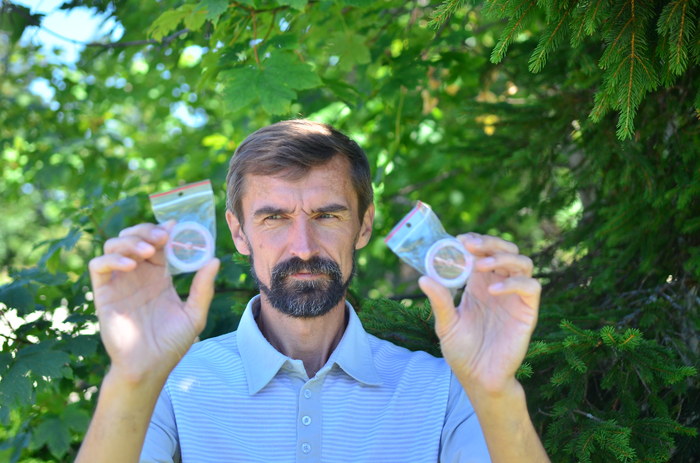Compass Science: Compass optimized for different regions
 Did you know that a normal top-of-the-line Moscow Compass has poorer performance in the WOC 2011-area in France than in Scandinavia or further north in Europe? And that you can actually buy a compass which is optimized for the WOC area in France? It was new for me until I talked to a developer for Moscow Compass at the Model event for WOC 2011 long distance today.
Did you know that a normal top-of-the-line Moscow Compass has poorer performance in the WOC 2011-area in France than in Scandinavia or further north in Europe? And that you can actually buy a compass which is optimized for the WOC area in France? It was new for me until I talked to a developer for Moscow Compass at the Model event for WOC 2011 long distance today.
- We had a special version for WOC in Trondheim optimized for northern Norway, Sweden and Finland last year. It was used by many in the Swiss team and also several of the Russians like Khramov and Tsvetskov, Fedor Polekshanov explains.
- Now we have a special version for the WOC 2011 area which is optimized for the France, Switzerland and Italy region. Many WOC runners have the compass – for example Marc Lauenstein, Philippe Adamski, Fabian Hertner.
Does it really work?
I was very surprised to hear about this – as this was very new to me. So does it really work? I first asked Jonn Are Myhren – a WOC runner who has been using this type of compass – and he was very satisfied with it. I then got to compare one compass optimized for this region with a “normal” Moscow compass which is very stable in other areas (and also tested against my own compass) – and there was really a difference. See this short video for a demonstration:
I also got a demonstration with a compass optimized for Australia – and here the effect was even stronger.
Why does it work?
- The magnetic field is not horizontal. The vertical component of the magnetic field influences on how long time it takes before the compass needle stabilizes, the Polekshanov explains while showing me several different compasses optimized for different areas.
- The change in stability is not important for all runners, but for elite runners this can be very important.
- The vertical component affects the horizontal plane of the compass card and pulls it to dip towards North or South. This natural force varies according to geographical location. A compass balanced in Moscow is not horizontal in France.
The “secret” behind designing the compass is very simple. The center position of the needle is just offset a tiny bit based on where in the world the compass is to be optimized for – except for that they are equal as far as I understood.
Something for you?
So is this something for you? Should you have 4-5 different compasses when traveling the world for orienteering events? Probably not – but I’d recommend trying it out and see if it is something for you. I was so impressed that I bought one for my girlfriend to try out during the races here in France…
I have not compared this with other compasses – like for example Silva compasses – so I can’t say anything about how the Moscow Compass technology is compared to the top-of-the-line compasses from Silva or Suunto.